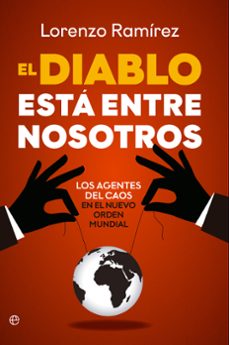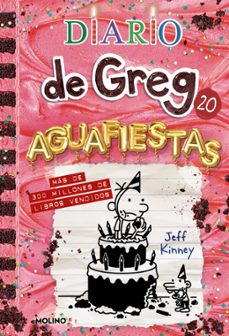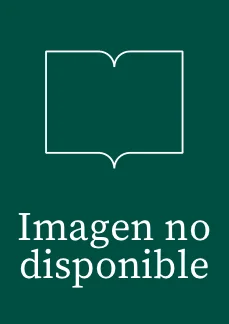Imprescindibles
Más vendidos Libros más leídos eBooks más leídos Todos los libros Todos los libros Autores destacados Series y sagas
Recomendados Libros recomendados Autores destacados Libros que inspiran Vidas con historia LGTBIQ+ English books
Ficción
Literatura Contemporánea Estudios literarios Clásicos Cuentos Poesía Teatro Libros de bolsillo Sagas literarias
Géneros literarios Novela romántica y erótica Novela negra Novela histórica Narrativa fantástica Novela de ciencia ficción Novela de terror Narrativa de humor Narrativa de viajes
No Ficción
Ciencias y tecnología Biología Ciencias Ciencias naturales Divulgación científica Informática Ingeniería Matemáticas Medicina Salud y dietas Formación Idiomas Estilo de vida Libros de Cocina Guías de viaje Narrativa de viajes Deportes Libros de Juegos Manualidades
Humanidades Autoayuda y espiritualidad Ciencias humanas Derecho Economía y Empresa Psicología y Pedagogía Filosofía Sociología Filología Biblioteconomía Estudios filológicos Estudios lingüísticos Estudios literarios Historia y crítica de la Literatura
Infantil
Juvenil
#Jóvenes lectores Narrativa juvenil Clásicos adaptados Libros Wattpad Libros Booktok Libros de influencers Libros de Youtubers Libros Spicy Juveniles Libros LGTBIQ+ Temas sociales Libros ciencia ficción Libros de acción y aventura Cómic y Manga Juvenil Cómic Juvenil Manga Shonen Manga Shojo Autores destacados Jennifer L. Armentrout Eloy Moreno Nerea Llanes Hannah Nicole Maehrer
Libros de fantasía Cozy Fantasy Dark academia Hadas y Fae Romantasy Royal Fantasy Urban Fantasy Vampiros y hombres lobo Otros Misterio y terror Cozy mistery Policiaca Spooky Terror Thriller y suspense Otros
Libros románticos y de amor Dark Romance Clean Romance Cowboy Romance Mafia y amor Romance dramatico Romance dramatico Romcom Sport Romance Otros Clichés Enemies to Lovers Friends to Lovers Hermanastros Slow Burn Fake Dating Triángulo amoroso
Cómic y Manga
Novela gráfica Novela gráfica americana Novela gráfica europea Novela gráfica de otros países Personajes, series y sagas Series y sagas Star Wars Superhéroes Cómics DC Cómics Marvel Cómics otros superhéroes Cómics Valiant
eBooks
Literatura Contemporánea Narrativa fantástica Novela de ciencia ficción Novela de terror Novela histórica Novela negra Novela romántica y erótica Juvenil Más de 13 años Más de 15 años Infantil eBooks infantiles
Humanidades Autoayuda y espiritualidad Ciencias humanas Economía y Empresa Psicología y Pedagogía Filosofía Historia Historia de España Historia Universal Arte Cine Música Historia del arte
Ciencia y tecnología Ciencias naturales Divulgación científica Medicina Salud y dietas Filología Estudios lingüísticos Estudios literarios Historia y crítica de la Literatura Estilo de vida Cocina Guías de viaje Ocio y deportes
RICHARD MISRACH
Recibe novedades de RICHARD MISRACH directamente en tu email
Filtros
Del 1 al 2 de 2
BLUME 9788498012262
Un libro convertido en obra de arte. Edición numerada. Formato y materiales escogidos especialmente para reproducir con toda fidelidad las imágenes originales. Fotografías de una gran belleza que muestran la soledad del ser humano. A lo largo de más tres años, entre enero de 2002 y noviembre de 2005, Richard Misrach se dedicó a tomar las fotografías que aparecen en este libro. Algunas de ellas muestran la inmensidad del mar con una gran riqueza de tonalidades azules y verdes, mientras que en otras se puede contemplar una diminuta figura humana perdida en la arena o en las aguas de una playa. Como explica su autor, lo que le atrajo de estas imágenes fue la fragilidad del ser humano en el paisaje, y para realizarlas se inspiró en las fotografías procedentes del 11 de septiembre, así como en la novela y la película On the Beach, escrita y filmada en plena guerra fría. Este trabajo ha formado parte de una exposición itinerante que se ha presentado en el Art Institute of Chicago, el Contemporary Museum (Honolulú), el National Gallery of Art (Washington DC), el Henry Art Gallery (University of Washington, Seattle) y el High Museum of Art (Atlanta).
Ver más
Tapa blanda
APERTURE FOUNDATION INC 9781597112772
In fall 2012, the hardcover edition of this book was released to critical acclaim and received several awards, including the 2013 American Society of Landscape Architects Honor Award for its innovative collaborative approach and design. Now available in a smaller, more afford - able paperback edition, Petrochemical America features Richard Misrachs haunting photo-graphic record of Louisianas Chemical Corridor, accompanied by landscape architect Kate Orff s Ecological Atlasa series of speculative drawings developed through research and mapping of data from the region. Their joint effort depicts and unpacks the complex cultural, physical, and economic ecologies along 150 miles of the Mississippi River, from Baton Rouge to New Orleans, an area of intense chemical production that first garnered public attention as Cancer Alley when unusual occurrences of cancer were discovered in the region. This collaboration has resulted in an unprecedented, multilayered document presenting a unique narrative of visual information. Petrochemical America offers in-depth analysis of the causes of decades of environmental abuse along the largest river system in North America. Even more critically, the project offers an extensively researched guidebook to the ways in which the petrochemical industry has permeated every facet of contemporary life. What is revealed over the course of the book, however, is that Cancer Alleyalthough complicated by its own regional histories and particularitiesmay well be an apt metaphor for the global impact of petrochemicals on the human landscape as a whole.
Ver más
Tapa blanda
Del 1 al 2 de 2



























